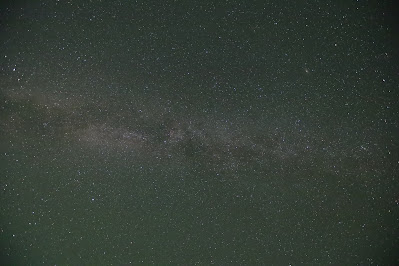Great Sand Dunes National Park and Preserve, located in southern Colorado, is a unique and breathtaking destination that offers incredible opportunities for astrophotography. The park is home to the tallest sand dunes in North America, which rise over 750 feet high against the backdrop of the Sangre de Cristo Mountains.
With its remote location, low light pollution, and clear skies, Great Sand Dunes National Park and Preserve is the perfect place for stargazing and capturing stunning photographs of the night sky.
As an avid amateur astrophotographer, I am always on the lookout for unique and breathtaking locations to capture in my photography. When I heard about the incredible natural beauty of Great Sand Dunes National Park and Preserve, I knew that I had to visit and see it for myself.
 |
| Night Sky over Great Sand Dunes National Park after snow storm |
Canon EOS Ra, EF16-35mm f/2.8L II USM Lens, f/2.8, ISO 25600, 13 sec. Post processing: Photoshop and Topaz AI.
This photo was done at midnight about 1 hour after a snowstorm had passed through the area. The snow on the dunes provided a striking contrast against the dark night sky, creating a dramatic and almost otherworldly atmosphere.
One particularly interesting element in the photo is the air glow. Air glow is a natural phenomenon that occurs when atoms and molecules in the Earth's atmosphere emit light. This can create a soft, diffuse glow in the sky that is visible on the long-exposure photos. The green, yellow and red colors are the result of emissions in the atmosphere.
The black clouds is visible on photo. It is another indicator of dark sky without light pollution.
It was a moment that I will never forget, and a photo that I will treasure for years to come. I feel so lucky to have been able to capture this photo, and I hope that it inspires others to get out there and explore the wonders of our natural world.
















































